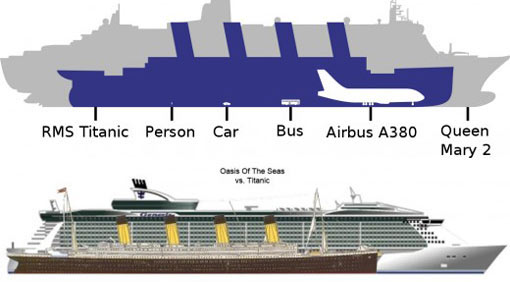Table Of Content

Modern cruise ships conduct regular safety drills, have advanced communication systems for emergencies, and are equipped with sophisticated medical facilities. Modern cruise ships are designed to cater to a wide range of preferences and ages, offering something for everyone, a concept that was largely absent in the Titanic’s era. First-class passengers enjoyed gourmet dining, a grand staircase, a swimming pool, a gymnasium, and even a Turkish bath. The second and third-class accommodations, while less luxurious, were still above the standards of other ships at the time. This significant increase in capacity has been facilitated by advanced design and better utilization of space. Unlike the Titanic, modern ships offer a more egalitarian approach to accommodation, with a wide range of options catering to different preferences and budgets.
Cruise Fares: Titanic vs. Modern Cruise Ships
We’ll also look into the advancements in safety features, onboard facilities, and technological innovations that define today’s cruise experience. In contrast, modern cruise ships, while built for luxury and comfort, also have impressive speeds but prioritize a balance of efficiency and passenger experience over just speed. For instance, the Wonder of the Seas and the Icon of the Seas, two of the largest cruise ships currently in service, have top speeds of about 22 knots (25 mph/41 kph). These speeds, slightly lower than the Titanic’s, are standard for today’s cruise ships. However, some modern ships, such as the Norwegian Gem and Harmony of the Seas, still outpace the Titanic, reaching speeds up to 25 knots (29 mph/46 kph). Today’s modern cruise ships are equipped with state-of-the-art safety features and must adhere to strict safety regulations.
Titanic vs Modern Cruise Ships: 6 Key Differences
You can consider the Royal Caribbean Icon of the Seas that expands across 1,196 feet, and its width is 65 meters (213 feet), and it’s one of the largest cruise ship in the world. Despite everything aboard cruise ships today, from waterslides and racetracks to multi-story theaters, the Titanic was actually the most comfortable and amenity-packed ocean liner when it debuted. Some of that glamour can be seen in the 1997 film “Titanic,” which dramatized the ship’s first and only journey. Décor included ornately carved woodwork, European furnishings, and gilded touches. The Titanic was technically an ocean liner, operated by the White Star Line. This means it was designed to transport passengers across the ocean (in this case, Southampton to New York).
Visualized: Comparing the Titanic to a Modern Cruise Ship – Visual Capitalist Licensing - Visual Capitalist Licensing
Visualized: Comparing the Titanic to a Modern Cruise Ship – Visual Capitalist Licensing.
Posted: Thu, 15 Apr 2021 07:00:00 GMT [source]
Modern Day Cruise Ships
Competition within the industry has led to the availability of discounted rates, promotions, and last-minute deals that can significantly reduce the overall cost of a cruise vacation. For example, onboard amenities such as spa treatments, fitness classes, or access to exclusive lounges may come at an extra cost. Excursions to explore ports of call are often available but typically require an additional fee. Specialty dining experiences, featuring gourmet cuisine and unique settings, may also incur additional charges. On the other hand, if you’re looking for a more budget-friendly option or prefer paying separately for specific amenities or services, many cruise lines offer à la carte pricing as well. This allows you to customize your experience based on your individual preferences while keeping costs under control.
Gangwaze is your one-stop destination for shore tours, pre-cruise hotels, transfers, vacation insurance & more. We’ve partnered with industry leaders to bring you the best deals and the most convenience. 40,000 people receive my best cruise tips, insights and guides every week.
They represent the ongoing evolution of maritime travel, highlighting advancements in safety, comfort, and global connectivity. Advancements in technology and efficiency have played a significant role in making modern cruise ships more affordable than the exclusive luxury experiences offered by the Titanic. Today’s cruise liners are equipped with state-of-the-art systems that allow for greater fuel efficiency and economies of scale.
Titanic Vs Modern Cruise Ships
Third-class cabins were more congested, with passengers sharing space in bunk-style accommodations. Despite the simpler living conditions, travelers in this class still enjoyed a decent level of service. While you can find 7-night cruise fares below $420 per person, tickets to sail on a new cruise ship are around $750 to $1,000 per person. The price of a suite on a modern ship is much lower than Titanic’s first-class cabins, at about $25,000 for a 7-night itinerary. Those who join the society are of "all ages and occupations, and their interests are multivariable," Kamuda says.

To address this issue, the modern cruise industry has made substantial strides in integrating environmentally friendly technologies into their vessels. From waste management systems to energy-efficient features, these innovations aim to reduce pollution while maintaining high standards of comfort for passengers. On the Titanic, dining choices were relatively limited compared to today’s standards. First-class passengers enjoyed lavish meals served in grand dining halls, while second- and third-class passengers had more modest communal dining areas. In contrast, modern cruise ship cabins come in various categories, catering to different preferences and budgets.
Titanic vs a Modern Cruise Ship Fleet – Comparison with Photos!
While larger vessels may offer enhanced stability due to their greater mass, they may also be more susceptible to external factors such as wind and waves. After the sinking of the Titanic, the White Star Line, which operated the ship, merged with Cunard, which was (and still is) known for famous ships such as the Queen Mary 2. But while Cunard has no plans to revive the Titanic name, other projects around the world have attempted to do so. While you wouldn’t find any surfing simulators or rock-climbing walls on the Titanic, you would find lots of entertainment venues suitable to the day. In total, the Titanic featured around 350 first-class staterooms, of which a small portion could be used as second-class staterooms if needed. Adam's goal is to enhance your cruising adventures with practical tips and insightful advice, making each of your journeys unforgettable.

These floating marvels can exceed 1,000 feet (300 meters) in length and can carry anywhere from 2,000 to over 6,000 passengers. They are equipped with state-of-the-art navigation systems, advanced stabilizers for a smoother ride, and comprehensive safety features to ensure a safe and enjoyable journey. Passengers on today’s cruise ships enjoy an extensive range of options, ensuring entertainment choices suit virtually every preference and age group.
To ensure passenger preparedness in case of emergencies, modern cruises conduct mandatory safety drills regularly. These drills familiarize passengers with emergency procedures such as evacuation routes, life jacket usage, and assembly points. By actively involving passengers in these drills, they become more aware of their surroundings and better equipped to handle unforeseen situations. This proactive approach significantly enhances overall safety onboard modern cruise ships. To cater to the growing demand for immersive experiences, modern cruise ships have embraced virtual reality (VR) technology.
How Big is a Cruise Ship? (2023) Cruise.Blog - Cruise Blog
How Big is a Cruise Ship? ( Cruise.Blog.
Posted: Tue, 20 Jun 2023 07:00:00 GMT [source]
However, those were of little use, given the temperature of the water and the quick onset of hypothermia. Still, those second-class passengers still had their linens changed daily, and there was a sink in each cabin, even if the restrooms were communal. With over 7 years of experience in the cruise industry, she brings a blend of insightful reporting and firsthand cruising knowledge. The Titanic, like other ocean liners of its time, was powered by coal-fired steam engines, which had a significant environmental footprint.
The tragic sinking of the Titanic in 1912 highlighted some major shortcomings in terms of safety features onboard. This meant that when disaster struck, there simply weren’t enough life-saving vessels to accommodate everyone on board. It’s a stark contrast to modern cruises where strict rules dictate that there must be enough lifeboats to accommodate every single passenger and crew member. These stabilizers consist of retractable fins or wings located beneath the ship’s waterline. They work by counteracting wave-induced movements to keep the ship steady, reducing the likelihood of seasickness and enhancing passenger comfort. Modern cruise ships are equipped with state-of-the-art navigation systems that utilize satellite technology, radar, and sonar to ensure accurate positioning and safe navigation through treacherous waters.

No comments:
Post a Comment